2021's Best Games, Part 2: The New Games #10-6
By PistonHyundai 0 Comments
The lines have blurred over the years. I got into it a little bit in my previous post, but video games aren't always products of their times anymore. It's not unlikely that you may boot up a game in 2022 only to discover that it isn't the game you played a few years or even a decade ago, and it's always a toss-up as to whether or not that's a good thing. Some games get a second chance after a rocky launch, and some are even reborn altogether. Hell, we've reached the point where it's a common AAA business practice to ship a game half-finished or even outright broken, taking your lumps at launch while banking on big post-release updates to bring in sales and acclaim. Other games are simply abandoned, left to succumb to cheaters or server closures, accumulating dust and negative Steam reviews in its wake.
These are fascinating times, and it's left the once-predictable tradition of Game of the Year lists in a weird place. There's probably plenty of rules you could make or ways to go about dealing with that, but for my "2021" list, I've included any game that felt like 2021 was a notable year for it, whether it's because of major updates, next-gen upgrades, coming out of Early Access, or anything like that. Most of the games you'll see here were first released last year, but it only feels fair to let some older games through the cracks. Anyway, here's the first half of the list; I'll be posting the top 5 along with some Honorable Mentions later on.
#10 - Watch Dogs: Legion

Watch Dogs: Legion is a pretty smart dumb game when it wants to be. For a while, it felt like it was doing a solid job at being the non-thinking man's Deus Ex, hitting all of those cyber-espionage notes in that overly-convenient AAA video game fashion, portraying a hacker revolution power fantasy by way of those scenes from network TV cop shows that reveal that nobody involved in the production knows how computers work. Hiding unconscious bodies (or dead ones, the game barely pretends like it matters) is as simple as walking up to them and hitting a button to cloak them, and hacking phones—or computers, or cars, or anything else with wires in it—is a similarly effortless button press away. If you don't stop to think about it for too long, it's a fun little time-waster. Even its big "recruit any NPC in the world and play as them yourself" feature makes a great first impression, killing two long-standing problems in the series with one stone.
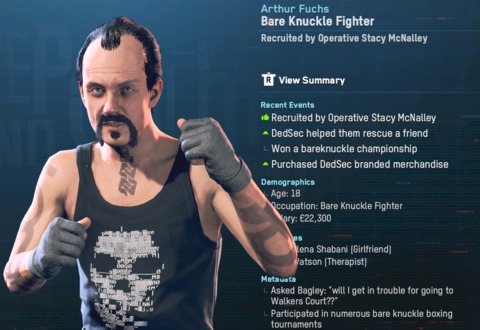
Who's your favorite Ubisoft protagonist? Yeah, me neither. That's why taking the XCOM approach and having the playable characters be the procedurally-generated citizens of London is such a refreshing move. The on-the-fly profiling of pedestrians you did in previous games barely amounted to anything, despite how Ubisoft propped it up as one of its distinguishing qualities as a hack-the-planet open world game, but with Legion's recruitment mechanic, it's been given purpose as a scouting tool—a pedestrian could have an occupation or traits that come with benefits that prove useful in gameplay—and it doesn't take very long at all before you start making up narratives in your head around the members of your odd resistance movement and the random variables that make up their background and history, and it ends up being a lot more fun than most of their actual plot lines. One of my early recruits was a veteran bare-knuckle fighter, with hand-to-hand prowess that I used to win all of the underground fighting championships in the game. After I saw his profile mention that he had filed for bankruptcy in the past, I assumed he had traveled a pretty tough road and made him look a bit more haggard than his initial appearance, giving him a widow's peak and tattoos to fit the part a bit better. It wasn't until after I did all this that I noticed that he was only 18 years old, at which point I shrugged my shoulders and threw a Benjamin Button gimmick on top of it. There aren't exactly a lot of interesting stories to be found in Ubisoft's London—save for a particularly morbid subplot involving a tech magnate that's gone missing, which flexes its dystopian muscles better than anything else in the game—but the buildup of your movement, and the resulting attempts to make sense of their procedurally generated lives is surprisingly amusing, and enough to make up for it.
At least, for a while. The problem with Legion is that you're ultimately just doing the same old Ubisoft shit you've no doubt seen before if you've played practically any of their AAA games in the past decade. I like sneaking into outposts and methodically clearing them out, but I did that in Far Cry 3, and the gadgets unique to Watch Dogs, while fun, can only entertain for so long when it feels like your experience was pushed through the same Play-Doh mold as Assassin's Creed, a feeling exacerbated by a line of AC crossover side missions. It's a shame, because there's a lot of potential in what's there, and it feels like Ubisoft could make an outstanding game if they didn't feel the need to make it their usual padded-out open-world game. I enjoyed it enough to reach the credits—and even take a glance at the absolutely barren multiplayer component—but it feels like the series is still at square one when it comes to fully delivering on the promise of the franchise.
#9 - MLB 21 The Show

I'm more of an arcade sports kind of guy, but every once in a while, I'll dip my toes into the simulation pool and see how it goes. I got NBA 2K14 with my PS4 at launch and ended up having a pretty good time with it (which in retrospect seems like great timing, as the series appears to have become a microtransaction nightmare that's monetized like a free-to-play game in the time since), and I even messed around with that Rory McElroy golf game a bit when I had a free EA Play subscription, but as far as baseball is concerned, it's mostly been Super Mega Baseball or the same old Mario Superstar Baseball for me. The last time I touched Sony's MLB franchise was on the PS3, and I couldn't really get into it much, but with the series coming to Game Pass in a "what the fuck" business deal that already seems quaint by comparison to Microsoft's more recent ambitions, it felt like the timing was right to give it another shot. After all I had a brand-new Series X to put through the paces.
2021's iteration ends up mostly being the Show I wanted it to be, but it takes a bit of work to get there. Every aspect of the gameplay can be customized to a staggering degree, so if you want batting to rely mostly on simple timing, saving the more involved, simulation style style gameplay for playing defense or pitching, you can do that. Everything from control schemes to camera angles to AI competency can be tweaked to such a degree that if you enjoy the sport in the slightest, you can probably mold the game into something you'd enjoy. Even in its Road to the Show career mode, where I'd expect at least some form of limitation, you have the option of letting the game take control for you on a case-by-case basis, going far beyond the typical "simulate game" functions I'm used to. I don't think the fielding in baseball video games is particularly fun, so I told the game to let Jesus take the wheel for a majority of the time, letting me focus on turning my created player—Hideo Kojima, as seen above, center-left in the front row after having won the World Series—into the best Shohei Ohtani-esque two-way player he could be.
It's not as much of a pick-up-and-play game as it could stand to be—the amount of options are overwhelming at first, and frankly, the game does a terrible job of surfacing the wealth of variables at your disposal—but if you dive into it, you'll probably come out of the other side with a good time. Eventually.
#8 - Record of Lodoss War: Deedlit in Wonder Labyrinth
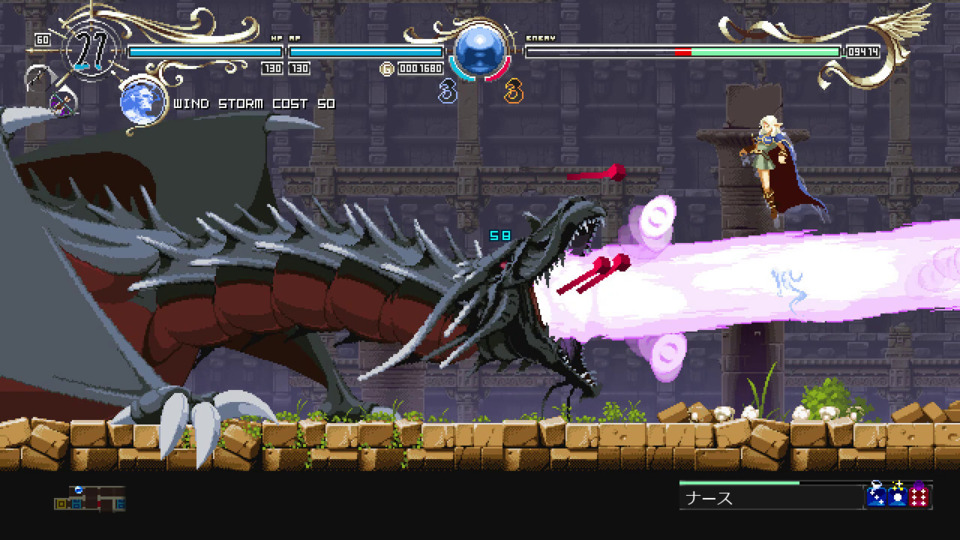
A lot of people place Symphony of the Night atop the Castlevania food chain almost by default, and to a point, I get it. It's a classic, but in a series that has immensely enjoyable action games like Super Castlevania IV and Rondo of Blood, it's hard for me to put the nonlinear games over the original formula. Still, it's hard to deny SotN's audiovisual splendor, or the simple joy of its movement and punchy, blade-based attacks. For me, it works more as a casual experience, because thinking about it more than "this is nice" leads you down a dark road—or rather, a dark hallway, over-and-over again for a half-hour in the hopes of getting an item that has a 1 in 1024 chance of dropping from an enemy that can't be found anywhere else, and that's not really what I play games for.
Record of Lodoss War: Let's Just Call It Wonder Labyrinth inevitably drew a lot of comparisons to Konami's seminal (and easier-to-pronounce) title with its flashy 2D visuals and familiar gameplay. Sure enough, it's a dead ringer for Symphony, and the game occupies the same kind of space for me, working best as a similarly mindless experience you soak in fully within a sitting or two. It's not a carbon copy, though, and the differences end up making it feel a bit closer to the action games of Castlevania yesteryear.
Where Wonder Labyrinth diverges from Symphony, and where critics begin to take issue with the game, is in how relatively light the experience is, with world design that plays it conservatively in providing branching paths and secrets, and boss battles that, while intense, don't require any serious grinding to overcome within a reasonable amount of attempts. I can understand people not being into that, but a tight 6-hour playthrough is more up my alley, and that ends up feeling better suited for the core gameplay anyway.
It doesn't take very long before Wonder Labyrinth makes it clear that the relatively small development team is a big fan of Treasure. The combat's central gimmick is an Ikaruga-style polarity shifting mechanic that has you changing between using a fire spirit and a wind spirit on the fly, each with its own perks. You're able to absorb damage of the same element you have equipped, and this will help level that spirit up to three times—leading to potentially huge increases in your damage output and health regeneration at Level 3. Taking damage will lower your level, while dealing damage will level up the spirit you don't have equipped. It's more intuitive than it sounds, and it leads to some interesting scenarios depending on what spirit the situation calls for. Most of the time, this mechanic does what you expect: some enemies take more damage from one spirit and are maybe even invulnerable to the other, but it really shines during the frenetic boss fights, which do an excellent job highlighting both the art direction and the gameplay in what is easily the highlight of the game. It's not uncommon to see bullet-hell projectile patterns being fired off, requiring you to rapidly shift back and forth to avoid damage and preserve your spirit levels, all while trying to do traditional Castlevania boss shit and getting your hits in on whatever huge monster you're contending with. It's the kind of challenging, fast-paced action that's usually reserved for more linear 2D action, and it could stand to pop up in metroidvanias a lot more often.
At is best, Wonder Labyrinth feels like the Gunstar Heroes to Symphony of the Night's Contra: a lean and mean 2D showpiece that distinguishes itself from its obvious inspirations with a few key twists. If the traditional exploration kept the intensity of the standout boss showdowns that punctuate it, this would've been a hell of a lot higher, but it's still a damn fine playthrough as it is.
#7 - Serious Sam 4
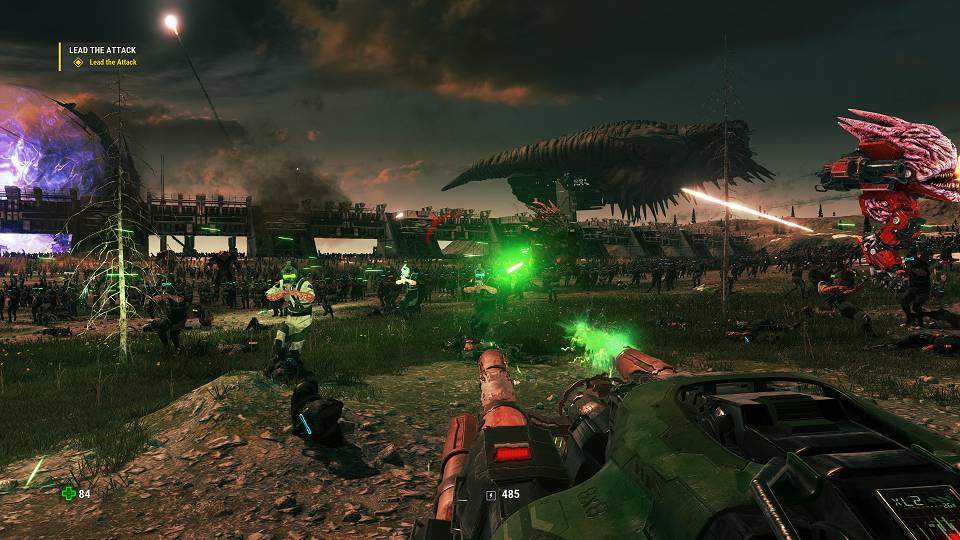
Serious Sam is a franchise that isn't exactly known for its nuance, but if you really dig into it, you discover just how finely tuned its combat is. You may be unloading on dozens of monsters at a time, each looking like they came out of a completely different series of games, but the placement of these enemies, the timing of when they spawn in, and their methods of attack and how they interplay are all impeccably crafted in just the right way to make the player squirm, with control of the situation feeling like it's always one false move from being wrested away. Croteam knows it, too: the original games waste no time in springing traps on players foolish enough to let their guard down, usually with some sort of cruel, playful wink—one +1 health pickup might spawn a giant rocket-spewing monster behind the player, while the one right across from it will play the "enemy spawning" sound effect 20 different times, yet without actually spawning anything at all. It's a series that doesn't take itself too seriously—name notwithstanding—but if you take the time to git gud, maybe playing it on its Serious difficulty setting (where both enemy and ammo counts are bumped up considerably in the early games), you come out of it with a deeper appreciation of just how much thought was put into each encounter.
Serious Sam 4, however, takes a fine look at the tight balance of its predecessors and says "yeah, fuck all that."
People generally think of the game's biggest battles when they talk about Serious Sam, and while the size of the fights has always gone up over the course of the series, it feels like Croteam took the Saints Row the Third approach to this one and really blew it up, doubling down on the loudest aspects and creating a game that's a monument to excess. The game opens in medias res, showing you its final battlefield for a few fleeting moments to give you a taste of how fucking crazy it gets, and while it's mostly smoke and mirrors—most of the literal hundreds of enemies onscreen are actually hi-res prerendered sprites, and some of the gunfire is coded to not hurt you so that it's possible to survive for longer than two seconds—it's still a sight to behold. You work your way back to that moment throughout the rest of the game, dealing with ever-increasing hordes all the while.
Let's put things into perspective. Final Doom's notorious "Go 2 It," a map iconic to the Doom fan community for being one of the most challenging of its time and popularizing the "slaughter map," has a whopping 206 enemies on its hardest difficulties. By the time Serious Sam 4 was done easing me in with its second level, my kill count was already at 541. Even for a Serious Sam game, there's just an insane number of enemies, and by the time your reach the game's second act in the French countryside, the maps are exponentially bigger than they need to be, using like 5% of its space for actual gameplay, with the rest being there just for the hell of it. Seriously, they mapped out like all of real deal Pompeii and a ridiculous amount of France's countryside just as, like, a game development exercise and let you use vehicles to drive around outside of the critical path if you want, randomly spawning enemies to fight as you go.
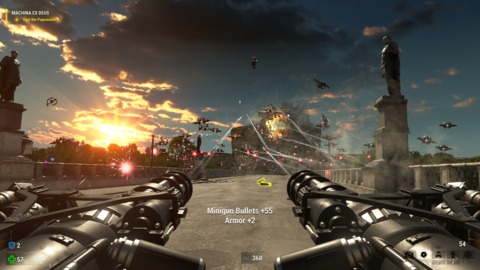
The sense of scale the game has is unlike anything I've seen from other linear FPS games, so I was a little concerned that it'd end up being too overwhelming, and to a degree, it is. The levels are damn near feature-length once you make it to France, so a lot of my sessions with the game ended up covering just a single level. Beyond that, though? To be honest, Serious Sam 4 was probably one of the most frictionless playthroughs I've done in the series, owed almost entirely to the amount of tools at your disposal. Perhaps fearing that they threw in too many enemies, Croteam gives you far too much to work with, introducing a skill tree that'll let you mix and match weapons to dual-wield and also adding a variety of consumable gadgets that each feel like a flip of the game's chessboard. When you can dual-wield miniguns, go into bullet time, and activate a combined speed/damage/firerate boost all at once, it doesn't really matter how many goons you throw at me. It's not the gripping challenge I came to love the series for, but it's an undeniable spectacle, and the game is loaded with moments where I couldn't help but chuckle at just how much shit was going on at a given time. By the time you make it back to that battle they tease in the intro, you'll have killed over eleven-thousand enemies, firmly placing its bodycount as the highest in the series—and it's not like it's an especially long game, either.
Earlier Serious Sam games made you feel like a matador, facing death head-on and gracefully dancing with your enemy as you peppered them with gunfire, your success depending entirely on using the right weapons, making the right moves, and maybe even getting a little lucky. Playing Serious Sam 4 makes you feel more like an exterminator with a DDT firehose, bulldozing over any obstacle with your ludicrous arsenal. A little disappointing, maybe, but you know what? Bulldozers are pretty fun, too.
#6 - Street Fighter V: Champion Edition
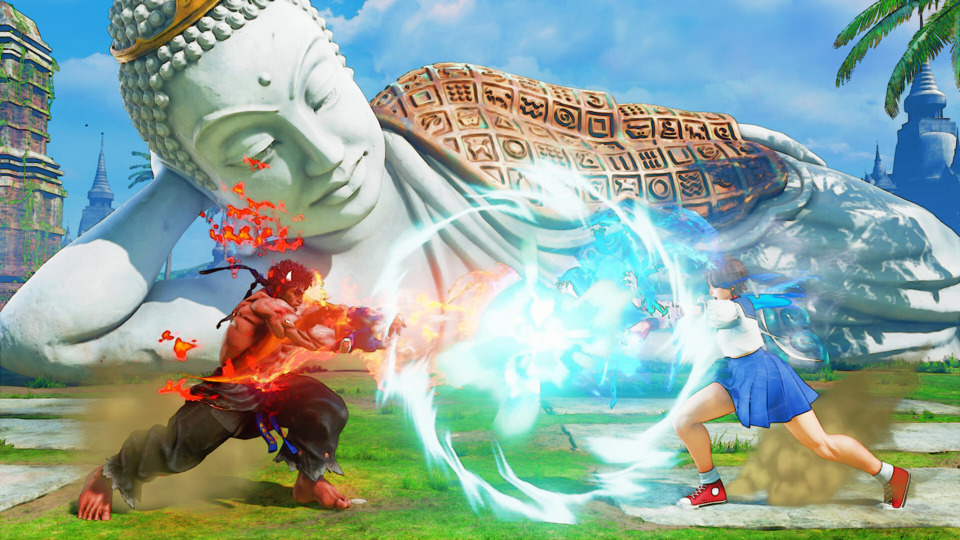

Excessive DLC can be frustrating for any game, but it feels especially brutal with fighting games, a genre that's had an uphill battle to maintain an audience since the decline of arcades. Considering the time commitment required to really know what you're doing (or the often-toxic community, or the studios unwilling to adopt reliable online multiplayer netcode, or...), throwing in season pass after season pass into a single game when people already weren't thrilled with having to pay for one in the first place isn't doing it any favors. The Super Turbo Third Strike Arcade Edition iterative updates are one thing, but the à la carte selection of countless characters available for $4.99 a pop feels at odds with the genre's dependency on a level playing field. It's a lot harder to learn how to deal with an opponent's character if you don't own them yourself. Hell, Tekken 7 locks more advanced frame data for attacks in its training mode behind a $2.99 purchase, which makes any kind of push for legitimacy feel like a bit of a farce. When you're going to insult the genre's most passionate players with that kind of gaffling, how do you think a casual fan is going to feel when they reach the character select screen and are welcomed with dozens of padlocks over a majority of the icons?
In my case, they're going to feel like spending their time and money elsewhere. As I began my dive into the Street Fighter series in 2020, I had it in my mind that I would pretty much ignore Street Fighter V for this exact reason—besides, everything I'd heard about SFV made it sound like half a game from the start, anyway. However, it turned out that a lot had changed since the game first launched. For starters, it was actually finished*, and had a Champion Edition release that included everything**, so I ended up giving it a shot, and while it isn't my favorite Street Fighter, it's the one I ended up playing the most this past year.

I'm not gonna pretend like I can really get into the finer details of this one too much, but I can definitely say it feels great to play. You have a much more forgiving input window to pull things off compared to earlier games, putting more focus on the application of your cool special moves and combos and less on the execution, making it rewarding to not only get dialed in with your mains, but also experiment outside of your comfort zone. I've only really explored two of the characters to any real degree (flowchart Ken until the day that I die, and I'll switch it up to Dan if I want to annoy the shit out of my opponents before they beat my ass), but the roster is full of characters with interesting designs and mechanics that make them feel distinct, which is impressive when you consider how long in the tooth the series has become. It's not quite Street Fighter III's new generation of characters—where I love pretty much every newcomer besides Oro—but SFV's unfamiliar faces are a fun bunch for the most part, with my favorites being the lovably dorky Rashid and the poison-chucking weirdo, F.A.N.G, who looks like the Monarch from the Venture Bros. and is probably about as much of a threat. It's not without its low points—there are some major duds in the cast in the Akuma-adjacent villains Kage and Necalli, who are both as lame as they are unnecessary—but otherwise, the roster's a great mix of new and old.
Street Fighter V's come a long way since it launched with 16 characters and the bare minimum in features. I'm not going to act like they deserve a pat on the back for taking so long to get the game where it should've been on day one—if I had spent $60 on it back in 2016, I would've been pissed—but I feel pretty good about what I've gotten out of it for the twenty-some dollars I did spend. There's a lot of directions they can go with the next Street Fighter (which may very likely be revealed later in the year), and despite the underwhelming design of its apparent poster child, they have me interested in whatever they do with it. At least, interested enough that I'll probably check it out a handful of years after release.
*Champion Edition did well enough that they went ahead and started development on a fifth season of characters afterwards, because of course they did. Thankfully, by the time I was finished with all of the single-player content, I had enough Fight Money to unlock all of the new characters for free, so at least I didn't have to spend any more legal tender.
**Champion Edition doesn't include some cosmetics or stages associated with the Capcom Pro Tour, which is frustrating, but when you already have Cultural Appropriation Ryu, Christmas Pimp Ken, and that kick-ass stage from Alpha 2, you're not exactly worrying about the things you're missing.
